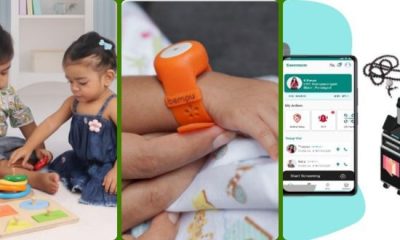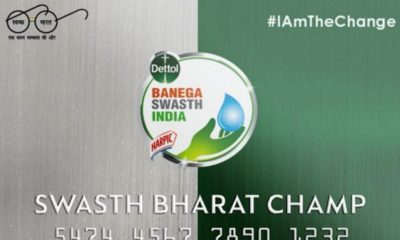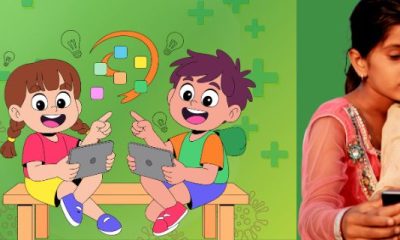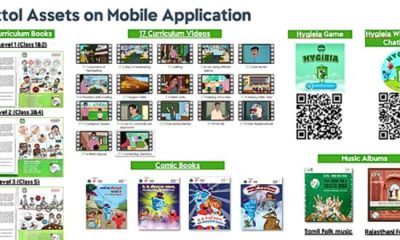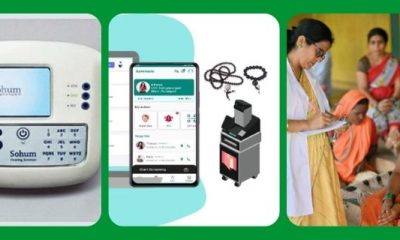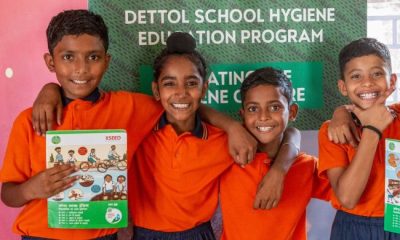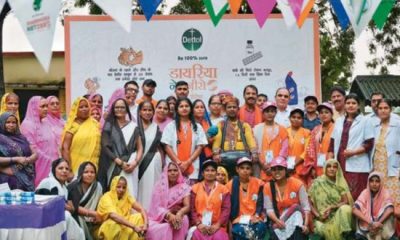New Delhi: As India marks January 24 as National Girl Child Day with an objective of highlighting the inequalities faced by girls and to promote awareness about the rights of a girl child and the importance of their education, health, and nutrition, we need to take a look at the window of opportunities that are being missed.
What Is The Window Of Opportunities?
What the mothers have in the days preceding to the birth, and right afterwards, is almost as important as what newborn babies have. So, if the newborn is being breastfed and fed all the necessary nutrients in the first 1000 days of the life, which includes the time in the womb, regarded as the first window of opportunity, we get to fix the overall nutrition problem in the country.
The second window of opportunity we get is by ensuring adolescent girls get all the nutrition and care they need for their optimal growth. Why is that important? Because the same girls will go on to be mothers and give birth to lives. In fact, this second window may be even more important than the first window as it determines the very foundation of the life, when it sprouts in the womb. Yet, so many battles an adolescent girl wages in her life today that not only does it rob her of the strength and stamina to live her life to the fullest, but also denies the future lives a good start. Early marriage, anaemia, poor menstrual hygiene practices, unsanitary living conditions, violence and gender-based discrimination complicate this vital window.
Also Read: National Girl Child Day 2022: Here’s Everything You Need To Know
National Family Health Survey (Nfhs-5) On Status Of Women
The 2021 National Family Health Survey-5 (NFHS-5) results tell a grim story. Almost a quarter (23.3%) of the girls are still getting married even before they turn 18.
Half a decade has elapsed since the previous NFHS Survey (2015-16), but there has been no reduction in the number of girls experiencing sexual violence by the age 18. The sorry figures remain unchanged in 2021. The positive overall sex ratio of 1020 females to 1000 males definitely offers some satisfaction, but the sex ratio-at-birth for children born in these last five years stands at 929 females to 1000 males. Preference for sons, bowing down to all the regressive notions surrounding the girl child, followed by sex-selective abortion tilt the balance against her. Less than half of the girls (only 41%) are fortunate enough to have ten or more years of schooling. Multiple reasons snatch their right to basic high school education. One of the health factors that affects productivity is the persisting problem of anaemia. Around 59.1% women, aged between 15-19 years are anaemic. Anaemia tends to not just decrease productivity but also, safe and right birth outcomes.
On the other hand, is the problem of Malnutrition, which is the biggest culprit that leads to disease and unhealthy birth and life outcomes, with the women and the girl child being hit the hardest. To add to it, a large proportion of adolescent girls carry the double burden of a compromised first window. They didn’t get the right antenatal and post-natal care so critical to start the life on a healthy note. The damage done in these first 1000 days of life are irreversible. As they step into this crucial second window of opportunity, if these adolescent girls are again denied freedom from fear, the right nutrition, care, education, health, social and economic opportunities – the irreversible damage already done to their lives shall infiltrate the coming generations too. Impaired cognitive and physical health shall plague them, like it did their mothers, right since she started her journey as a girl child. The rise in severe wasting, anaemia, obesity and overweight cases between NFHS-4 and NFHS-5 indicate compromised food and nutrition security.
Also Read: ‘On This National Girl Child Day, Say No To Violence Against Girls’
The return on investment in the second window of opportunity is significantly higher than the first window of opportunity. For example, if the second window is fixed, the girl child that tuns into a mother is far more aware, healthy and privileged. She is strong enough to ensure that the first window of opportunity that comes in her child’s life is not compromised. So, fixing the second window shall help fix the first window and in doing that we help build a new world that’s safe, healthy, nourished, and all-inclusive.
What’s The Need Of The Hour?
Programmes like Poshan Abhiyaan, the proposal to increase marriageable age of the girl child, Beti Bachao Beti Padhao, UJJAWALA scheme for prevention of trafficking and commercial sexual exploitation and the Sukanya Samriddhi Yojana—a small saving scheme for education and marriage expenses, are a good move in this direction. The expansion of the scheme for adolescent girls (SABLA) to additional districts to cover a greater number of adolescent girls for health and nutritional services and the prohibition of Child Marriage (Amendment) Bill 2021′ that will raise the age of marriage for girls from 18 to 21 years are significant steps. But we need many more such moves. Increasing entitlement and creating a space to exercise the freedom from fear is important. Today’s girls need emancipation – a mobility from the bondage. They want to excel in all fronts.
A new national legislation to address all forms of malnutrition and hunger and ensuring sustainable biodiversity and planet would be a strategic initiative.
On the other hand, we also need to make available good water, sanitation, hygiene, nutrition and health education, including life skill education. These will multiply and deepen the benefits of the quality of food and nutrition that is accessed by even the very poorest women and families. It is necessary to reach out to the most marginalised population.
Climate change and other environmental factors also put the girls at risk to multiple neglected tropical and vector-borne diseases like malaria and lymphatic filariasis. These illnesses further complicate their health and nutrition status, visibly impairing the girl child’s potential.
A girl needs a safer and healthier place to survive and thrive. Let’s address these illnesses before they turn fatal.
The time has come to address the underlying and structural causes that prevent the girls from rising to the occasion and taking charge of their own future. Only when we invest in a sea change in their human condition and social position can we change things. If we can create an enabling environment that let our girls exercise enough control over their lives, so they can confidently raise their voice and live a healthy life with dignity, it would be most rewarding and will promise a happy future for the nation.
Also Read: National Girl Child Day: 10 Facts On The Status Of Girl Child And Women In India
About The Author
Basanta Kumar Kar is an international development professional and recipient of the Global Nutrition Leadership Award.
Disclaimer: These are the personal opinions of the author.
NDTV – Dettol have been working towards a clean and healthy India since 2014 via Banega Swachh India initiative, which is helmed by Campaign Ambassador Amitabh Bachchan. The campaign aims to highlight the inter-dependency of humans and the environment, and of humans on one another with the focus on One Health, One Planet, One Future – Leaving No One Behind. It stresses on the need to take care of, and consider, everyone’s health in India – especially vulnerable communities – the LGBTQ population, indigenous people, India’s different tribes, ethnic and linguistic minorities, people with disabilities, migrants, geographically remote populations, gender and sexual minorities. In wake of the current COVID-19 pandemic, the need for WASH (Water, Sanitation and Hygiene) is reaffirmed as handwashing is one of the ways to prevent Coronavirus infection and other diseases. The campaign will continue to raise awareness on the same along with focussing on the importance of nutrition and healthcare for women and children, fight malnutrition, mental wellbeing, self care, science and health, adolescent health & gender awareness. Along with the health of people, the campaign has realised the need to also take care of the health of the eco-system. Our environment is fragile due to human activity, that is not only over-exploiting available resources, but also generating immense pollution as a result of using and extracting those resources. The imbalance has also led to immense biodiversity loss that has caused one of the biggest threats to human survival – climate change. It has now been described as a “code red for humanity.” The campaign will continue to cover issues like air pollution, waste management, plastic ban, manual scavenging and sanitation workers and menstrual hygiene. Banega Swasth India will also be taking forward the dream of Swasth Bharat, the campaign feels that only a Swachh or clean India where toilets are used and open defecation free (ODF) status achieved as part of the Swachh Bharat Abhiyan launched by Prime Minister Narendra Modi in 2014, can eradicate diseases like diahorrea and the country can become a Swasth or healthy India.
[corona_data_new]


